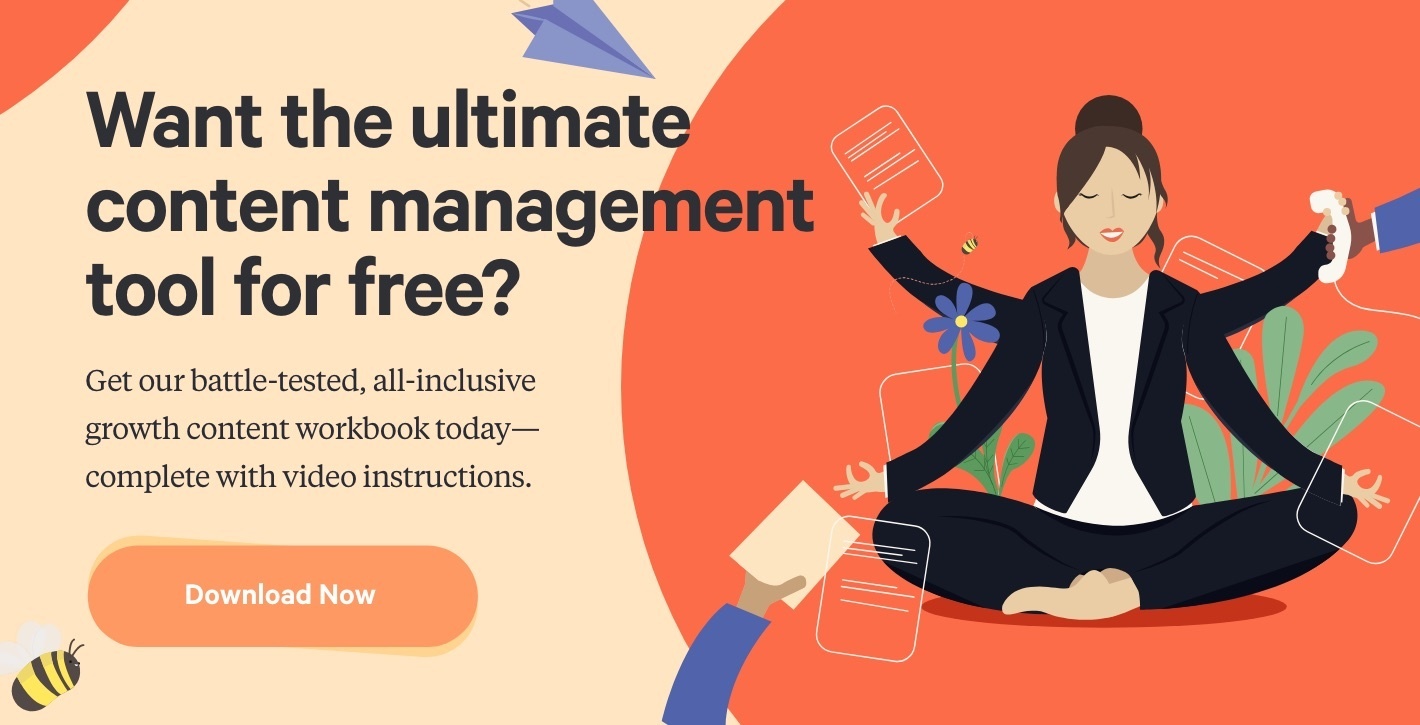Why Bottom-Of-Funnel Content Doesn’t Work By Itself



Admittedly, the bottom of the funnel (BOF) is where it’s at. It’s the party in full swing. The crowd singalong at a concert. The long-awaited “you can kiss the bride.” The fireworks finale on the Fourth of July!
Those things are awesome, but they don’t happen in a vacuum. There’s no finale without the rest of the show, and it’s not a rockin’ party until people start showing up (plus, you had to invite them in the first place, right?). That’s how BOF works. In essence, it doesn’t really work at all until the top-of-funnel (TOF) and the middle-of-funnel (MOF) activities have already done what they do best—reel people in.
Why BOF-Only Is A CWOT (Complete Waste Of Time)
It’s not a complete waste of time—it was mostly just the only acronym that worked.
But BOF-only surely isn’t the most effective way of doing inbound. To be clear, our definition of bottom-of-funnel content is content intended specifically to nudge prospects who are close to being customers to actually being customers. To get the job done, BOF content attempts to answer any lingering questions about a company or address any remaining doubts.
If you’re just getting a new company off the ground, your website might consist of product or service pages, a team page, and a contact page. The contact page would be considered BOF in most cases. If you’re a software company, it might instead be a free trial or a demo; if you’re a service company, it might be a consultation. Those are all BOF—and really important!
The problem is, this kind of website only talks to people who are interested in committing. If you think of inbound in terms of a relationship, here’s a translation: I’m only interested in you if you’re interested in me. Now what kind of message is that sending to potential customers? It’s like asking someone to marry you the first time you meet.
If you only have BOF offers, forms, and CTAs, you’re only focusing on the very small number of people who are ready for this kind of commitment (to either working with you or getting married after the first date, take your pick). In fact, you’re probably scaring away a good portion of the population who, given time, might be interested in talking with you but aren’t willing to do so after spending just five minutes on your website.
In reality, there are many steps that happen before someone commits to buying a product or service. Research shows that people go through a fairly substantial decision-making process in an attempt to answer specific questions. TOF and MOF address those questions and help people feel more comfortable as they move toward a final decision to buy. Without the kind of content that helps them get to know and trust you, you’re missing out on connecting with people early in their decision-making process.
FWIW (For What It’s Worth): The Nectafy Funnel
Ideally, we’d love for everyone to say they want to talk to Lance, our sales guy, right out of the gate—without ever having interacted with us before. (That would certainly save us lots of time, and Lance would love all that talking!) If that’s all we were striving for, then all the content we have would be BOF, including a free consultation and ways to contact us.
But there’s more to it than that, which is why we start by simply trying to connect with people who are in the very early stages of problem-solving.
Here’s how our funnel looks.
TOF Content
Most people are interested in researching a problem first, before they talk to anyone. In the case of our target audience, they have questions about how to generate and increase leads. They’re researching questions like:
- How can I get more leads?
- Why doesn’t my web presence help me get leads?
- Am I spending enough marketing dollars, and am I spending them in the right place?
- Why are my returns diminishing on print, pay-per-click (PPC), tradeshows, etc.?
As a result of their initial research, they find out about inbound marketing, which leads them to research the following:
- How does inbound marketing work?
- How can I do inbound marketing without the appropriate staff?
- How does inbound marketing help generate leads?
- How developed does my website need to be before we try inbound marketing?
- We just started using HubSpot—now how do we make it work?
We address questions like these and help people learn more about inbound marketing in blog posts like:
- 6 Mobile Mistakes Made By Inbound Marketers Everywhere
- Writing Great Content: 4 Things We’ve Learned
- Marketing: How You’ve Never Thought Of It Before
- How To Manage Multiple Websites In HubSpot (Without Going Crazy)
We also provide offers that help us “meet” people and let them get to know us a little better. This TOF content is designed to attract people who have the same interests as us (are you seeing the parallels here?), giving the relationship a better chance of success down the line. Examples of this type of content include:
- The Beginner’s Guide To Inbound Marketing
- The 8-Part Guide To Writing Stellar Website Copy
- How Our Company Put HubSpot To The Test
MOF Content
Once people have gotten to know us, they may actually like us! Which means they might want to hang out a little bit more often (more return visits to our website), and they might respond to the occasional party invitation (like clicking on email links). By now, they like what we have to say, and they’re maybe even hoping that, like a friend, we can help them solve their problems. We’ll hopefully be counted among their trusted sources as they research the answers to questions like:
- How can I show a return on investment for inbound marketing?
- Can I trust an agency to care about my business as much as I do?
- Can I solve this leads problem myself, or do I need outside help?
- How long will it take to see results?
- Why doesn’t HubSpot work for me now?
Here’s where MOF content comes into play. We realize that we’re not yet friends for life with these prospects, but we would really like to help them out. It gets a little murky here, because talking about yourself too much too early (like now) will turn people off. So we’re trying to help solve problems by presenting options—without making it all about us. Examples of our MOF content are:
- Our Inbound Marketing Results Calculator so people can see the kind of results they may be able to achieve using inbound marketing.
- Our Battle-Tested, All-Inclusive Inbound Marketing Workbook to help people manage their own inbound marketing efforts.
BOF Content
Finally, it’s time to pop the BOF question—will you or won’t you work with/buy from us?
By now, the prospects that have been with us from the start have evolved in their problem-solving process, and they’re now researching us as the company that can solve their problems. They know who we are, and they’re familiar with our point of view. If they’ve stuck with us this long (even if it’s still just enjoying our content and learning from it), they will be more receptive to, say, a free inbound marketing consultation with Lance. (Classic BOF—and knowing Lance, it’s probably very similar to an actual party in full swing.) Hopefully, that last piece of the puzzle helps dispel any doubts they may still have about hiring Nectafy to handle their inbound marketing.
So, we know you didn’t come here for relationship advice, but here it is anyway: Don’t force a relationship with your prospects by offering them only BOF content. Instead, meet them where they’re at in the decision-making process and give them what they need. When you know you’re a good match from the start, that final yes will be well worth the effort.

